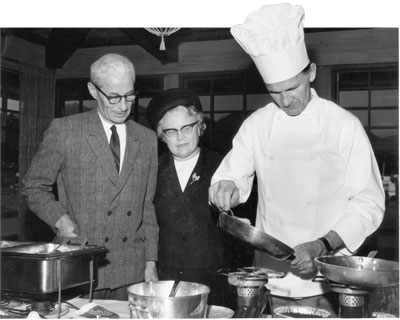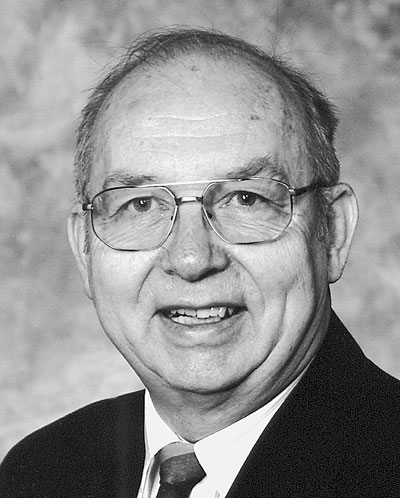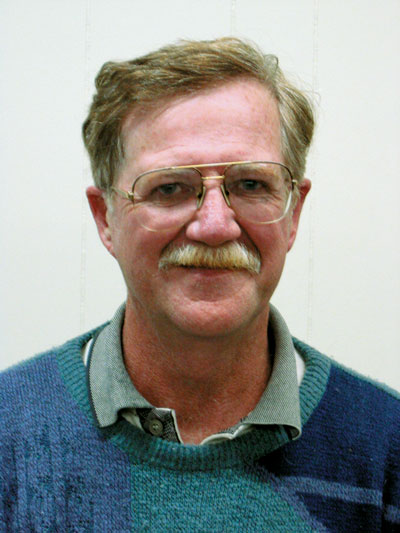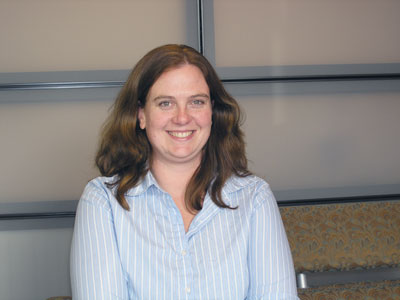
Editors Through the Years
By Canadian Poultry
Features 100th anniversary Notable People Business/Policy Canada ProfilesFew details are available on editors from 1913-1932, but see page 32 for snippets.
Fred Beeson (1932-1980) Fred Beeson was born in England in 1901 and his love of poultry started when he was 15, during the First World War, when, no doubt, his family produced food to supplement the limited rations available.
Fred Beeson was born in England in 1901 and his love of poultry started when he was 15, during the First World War, when, no doubt, his family produced food to supplement the limited rations available.
By 1925, Beeson was in Canada, working for the Alberta Poultry Branch until he moved to British Columbia in 1928. There he bought and lost money operating a breeder farm on Vancouver Island, then worked for a mainland-B.C. leghorn breeder for a year.
He joined the staff of Canada Poultryman in 1931 as an advertising salesman, then bought the magazine for $1 and took over as editor in 1932, rather than let the magazine fold during the Depression. During that time he often used the dollar taken for a new subscription to pay for his expenses on the road. He lived on a one-acre lot in what is now an upscale neighbourhood in Burnaby and produced the magazine from the basement. The April 1932 issue grossed $236.04 with a full-page ad costing $30.
He and his wife, Page, were married in 1933, and from then on, she was in charge of bookkeeping and magazine production, with some part-time help. They also operated a breeder operation of between 1,000 and 2,000 birds, producing breeds that didn’t compete with Canada Poultryman advertisers, ending with a Brown Leghorn-Light Sussex cross, which could be colour sexed.
Without Beeson’s vigorous campaign in 1951 to get Ottawa to approve a Newcastle Disease vaccine, it is likely the entire Fraser Valley population of chickens – spread among 3,000 small flock owners – would have been destroyed to control the epidemic.
Likewise, his championing of a national supply-management system was instrumental in persuading producers to work together to get approval for provincial marketing boards, which later developed into national agencies for eggs, turkey, chicken and hatching eggs.
Beeson’s support of supply management and marketing boards brought him into direct conflict with the allied trades who were then firmly in the driver’s seat. This cost the husband-and-wife team many ad dollars, and sometimes an issue of Canada Poultryman was pasted up, ready to go to the printers, but publication was delayed until sufficient ad income could be achieved, because his bank overdraft was at its upper limit.
Fred wrote his last editorial for the July 1980 issue of Canada Poultryman. He died while on holiday in Maui on Mar. 7, 1982 at the age of 80.
Tony Greaves (1980-1998)  Tony Greaves had a banner year in 1996. He received not just the Ontario Poultry Council’s Award of Merit but also the Max Wiener Award at the Canadian Hatchery Federation convention.
Tony Greaves had a banner year in 1996. He received not just the Ontario Poultry Council’s Award of Merit but also the Max Wiener Award at the Canadian Hatchery Federation convention.
In an editorial following the awards, Greaves wrote: “Two major awards in one year. Air Canada subsequently warned me that they’ll start charging for extra baggage if my head swells any further.”
He followed the jocular aside with sincere thanks to the industry.
Greaves began his involvement in the Canadian poultry industry in 1958, a year after immigrating to Canada from Yorkshire in England, where he had attended Seale Hayne Agricultural College in Devon.
He worked as summer relief at the Alberta Random Sample Test Station north of Edmonton. He then became a chick salesman with Prairie Hatcheries in Regina before purchasing the company from Harold McLellan.
He worked as a hatcheryman through the 1960s and 1970s before becoming manager of the Saskatchewan Chicken Board and then editor of Canada Poultryman. Greaves later continued his involvement with the magazine as contributing editor, writing feature and news articles, providing sage advice to the current editor and submitting a monthly column entitled “Parting Shot”.
In addition to much wisdom, the column frequently contained tidbits from Greaves’ past.
Jim Knisley (1998-2000) Jim Knisley’s term as editor of Canada Poultryman spanned the centuries. It began late in the 20th century and ended early in the 21st.
Jim Knisley’s term as editor of Canada Poultryman spanned the centuries. It began late in the 20th century and ended early in the 21st.
He came to Canada Poultryman from the Regina Leader-Post, where he had been an agriculture reporter and columnist for more than 15 years. Prior to that he had been a reporter and an occasional columnist and editorial writer at newspapers in Sarnia, Delhi, Waterford and Petrolia, Ont.
Early in his term as editor, he was confronted by a crisis at CEMA (now EFC). As CEMA chairman Felix Destryker explained it, CEMA was a victim of its own success. Demand for eggs had increased significantly; thus, the provincial boards and the national agency had to decide how to allocate the new production. A compromise proved hard to find and for a while the agency seemed on the brink. But, not for the first time, cool heads prevailed and an agreement was reached.
Knisley left the editor’s job in 2001 but continued to write articles for Canadian Poultry. He retired fully in May 2012, but his monthly column entitled “All Things Considered,” is a reader favourite.
Marilyn White (2000-2005) Marilyn White has had a strong connection to agriculture for most of her career. Her interest in poultry was started at the knees of her parents who recount their adventures of owning a very small farm and chicken hatchery in the U.K. during WWII. After immigrating to Canada they continued farming in SW Ontario.
Marilyn White has had a strong connection to agriculture for most of her career. Her interest in poultry was started at the knees of her parents who recount their adventures of owning a very small farm and chicken hatchery in the U.K. during WWII. After immigrating to Canada they continued farming in SW Ontario.
She received a B.Sc. from the University of Guelph and shortly after accepted the role of research assistant in the Department of Zoology. Her own jump into the poultry world came when, after a short hiatus for family, she accepted a position with Vetech Laboratories (now CEVA) in Technical Support and Marketing for their line of poultry vaccines. Canada Poultryman, with its strong connection to the poultry farmer, was an important venue for advertising their products.
In 2000, she took on the role of editor for Canada Poultryman. In 2002, to bring the magazine into the 21st century, the name was changed to Canadian Poultry. There were also major changes occurring in agriculture. 9-11 heightened border controls and import/export requirements, WTO continued to challenge supply management and diseases such as Mad Cow and High and Low Path Avian Influenza brought food safety and on-farm biosecurity to the forefront but resulted in great improvements to the poultry industry. Biosecurity improvements filled Canadian Poultry content and one of her 2004 editorials on the need to strengthen biosecurity was recognized by Canadian Business Press as one of the Top 5 editorials for a trade publication in Canada.
The opportunity to take on the publisher and national sales manager role for Canadian Poultry came in 2006, and her interest and enjoyment of the poultry industry continues to grow – just ask her family who warn visitors not to get her started talking poultry.
Kristy Nudds (2006-2013) Kristy Nudds assumed the editor’s role in January 2006, driven by a passion for agricultural communications. Kristy first began writing as a student with the University of Guelph’s SPARK (Students Promoting Awareness of Research Knowledge) program. An experienced technical writer, Kristy then worked for an advertising agency with animal health and crop clients.
Kristy Nudds assumed the editor’s role in January 2006, driven by a passion for agricultural communications. Kristy first began writing as a student with the University of Guelph’s SPARK (Students Promoting Awareness of Research Knowledge) program. An experienced technical writer, Kristy then worked for an advertising agency with animal health and crop clients.
Nudds is still a member of the International Federation of Agricultural Journalists via her membership in the Canadian Farm Writer’s Federation. In April of 2012, she was elected to the Board of the Eastern Canadian Farm Writer’s Federation. She is also an Articling Agrologist (A. Ag) with the Ontario Institute of Agrologists.
A native of Ancaster, she holds a B.Sc. in Animal Biology and an M.Sc. in Nutrition and Metabolism, and now resides in Tillsonburg, Ont., with her husband, Ryan, and newborn daughter, Abigail.
In September 2011, Nudds received an award from the International Federation of Agricultural Journalists for her
article entitled “Bird’s Eye View” which appeared in CPM in April of the same year. This feature detailed the use
of in-barn cameras, allowing for the real-time observation of birds from anywhere, anytime.
Print this page